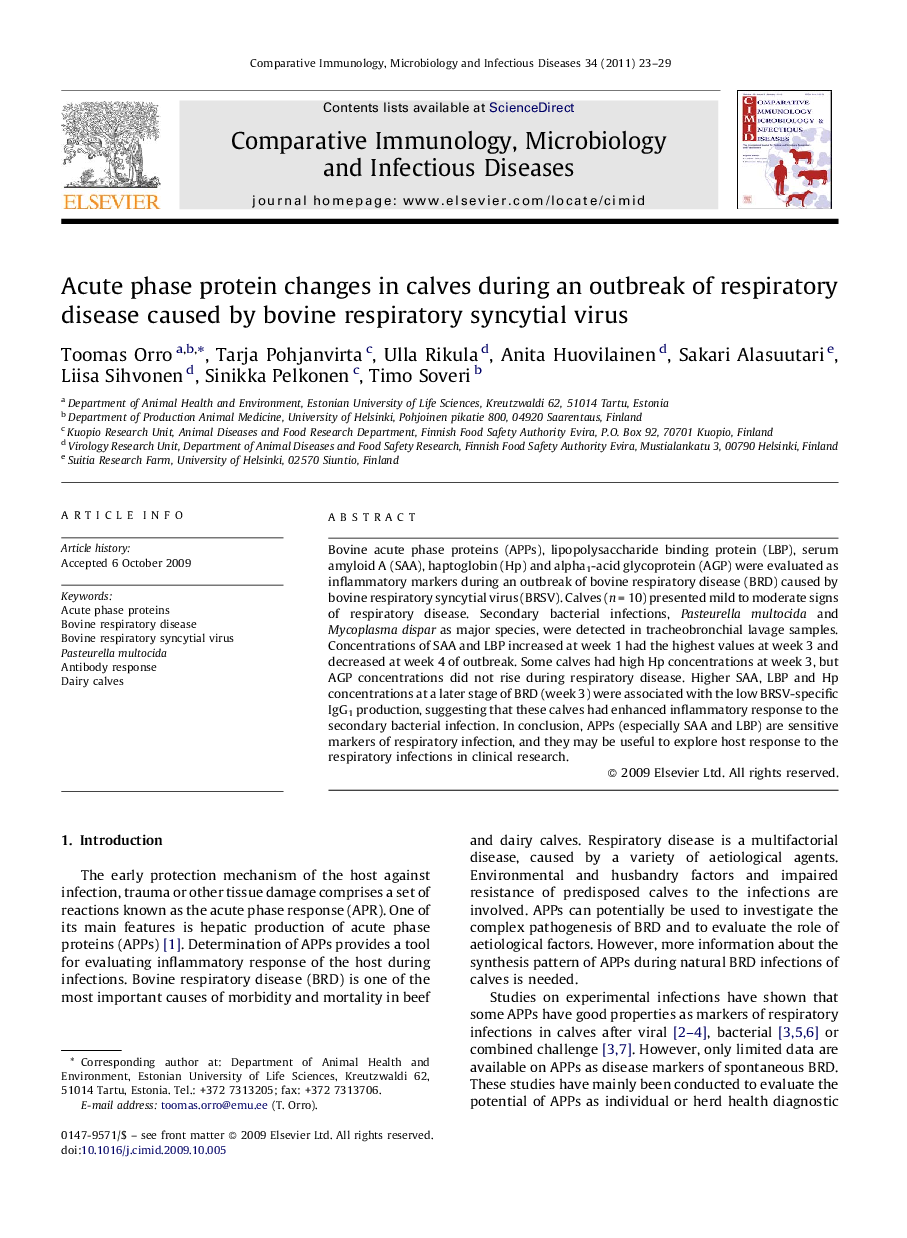| کد مقاله | کد نشریه | سال انتشار | مقاله انگلیسی | نسخه تمام متن |
|---|---|---|---|---|
| 2428495 | 1106318 | 2011 | 7 صفحه PDF | دانلود رایگان |

Bovine acute phase proteins (APPs), lipopolysaccharide binding protein (LBP), serum amyloid A (SAA), haptoglobin (Hp) and alpha1-acid glycoprotein (AGP) were evaluated as inflammatory markers during an outbreak of bovine respiratory disease (BRD) caused by bovine respiratory syncytial virus (BRSV). Calves (n = 10) presented mild to moderate signs of respiratory disease. Secondary bacterial infections, Pasteurella multocida and Mycoplasma dispar as major species, were detected in tracheobronchial lavage samples. Concentrations of SAA and LBP increased at week 1 had the highest values at week 3 and decreased at week 4 of outbreak. Some calves had high Hp concentrations at week 3, but AGP concentrations did not rise during respiratory disease. Higher SAA, LBP and Hp concentrations at a later stage of BRD (week 3) were associated with the low BRSV-specific IgG1 production, suggesting that these calves had enhanced inflammatory response to the secondary bacterial infection. In conclusion, APPs (especially SAA and LBP) are sensitive markers of respiratory infection, and they may be useful to explore host response to the respiratory infections in clinical research.
Journal: Comparative Immunology, Microbiology and Infectious Diseases - Volume 34, Issue 1, January 2011, Pages 23–29